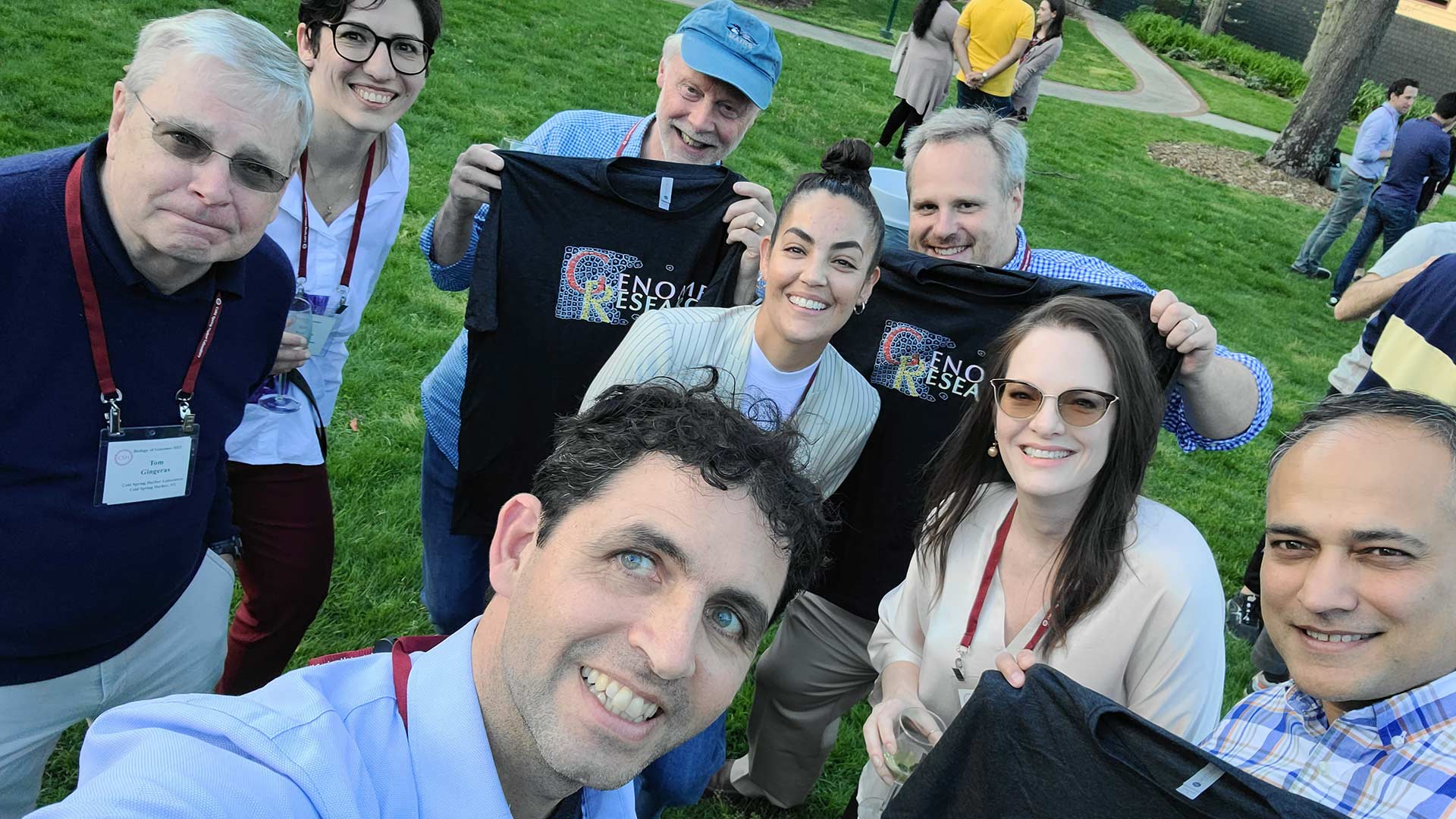This essay highlights the diverse programs of Cold Spring Harbor Laboratory (CSHL), revealing how seemingly separate initiatives strategically intertwine to make this institution central to the future of science. I believe that the interconnectivity of our research and education programs is CSHL’s greatest strength. Combined, they enhance the impact of science conducted on our Long Island campus and, with altruistic purpose, advance life science throughout the world.
CSHL is a unique research and education institution in both form and function. It supports extraordinary in-house research, trains visiting scientists, publishes resources used worldwide, and serves as the top meeting place for biologists. The physical attributes of the picturesque campus attract the world’s scientists here, but the real draw is deeper. The human interactions catalyzed by the research and education programs make CSHL the absolute center of contemporary life science.
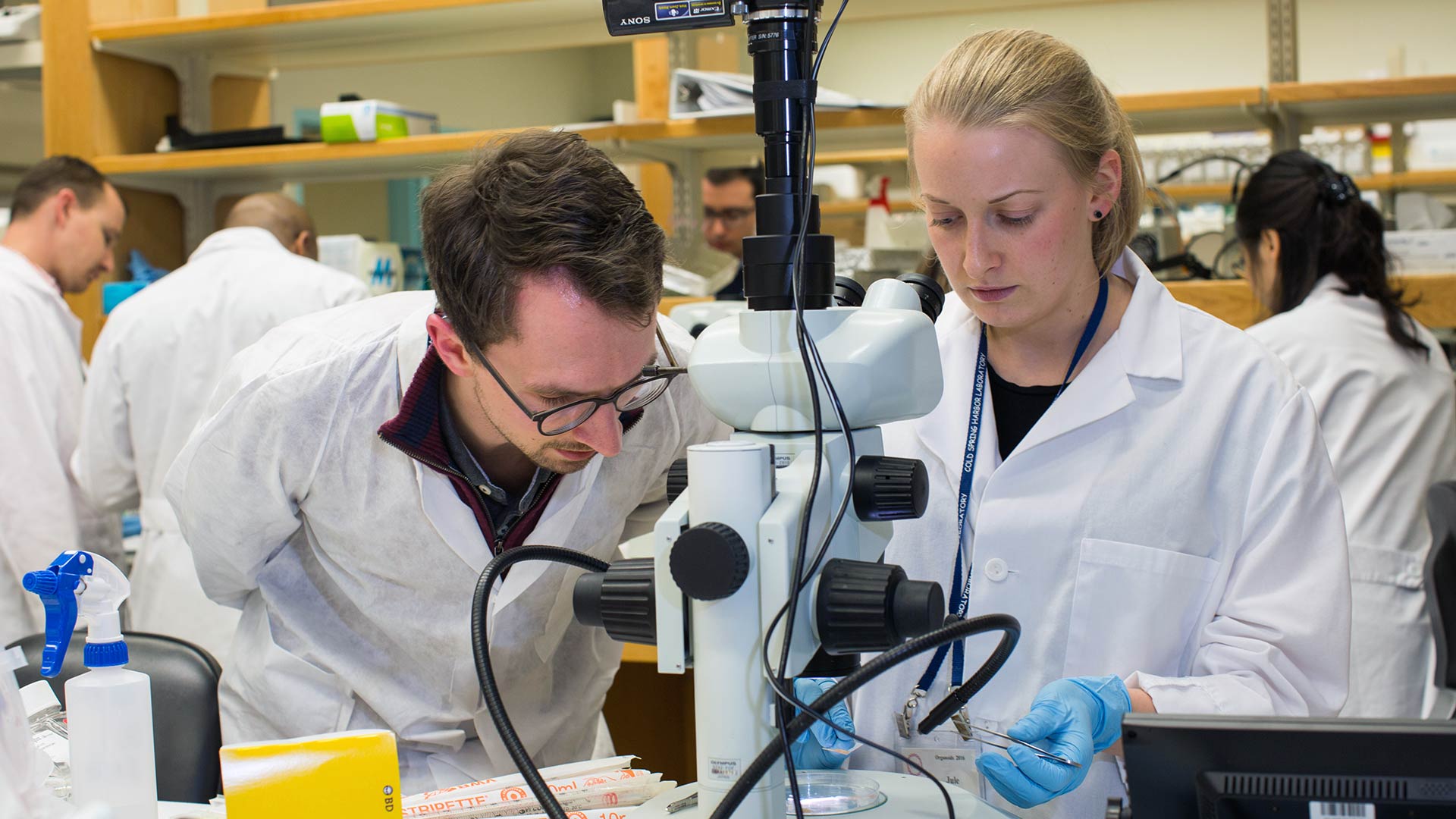
From this core, we promote and advance science for a better world—and, of course, there is more to discover. We are planning new research and education facilities that are critical foundations for our future.
Connectivity in research
At CSHL, scientists mingle and share ideas on a campus deliberately designed to encourage interactions. In a village-like atmosphere, in-house scientists work in small-scale buildings—which means people have to leave their own workplace often. Shared eating spaces and beautiful grounds contribute to a culture that promotes thought and interaction. But we are not resting on our laurels. There is a growing need for new space to accommodate scientists in exciting new areas of research.
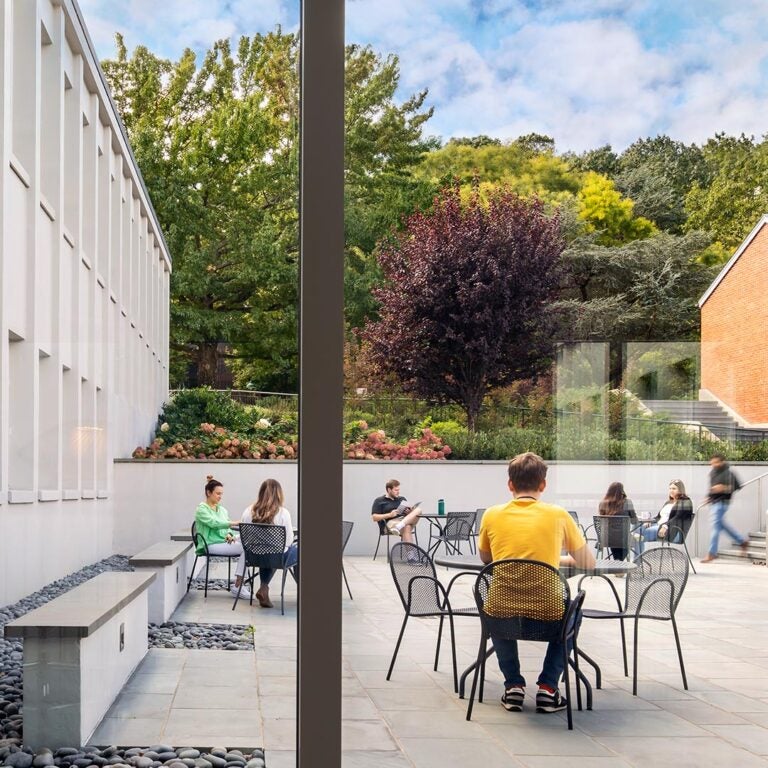
Our decentralized architecture and institutional structure reflect a defining organizational feature of CSHL. We have no departments, so scientists working in different fields readily learn from and collaborate with one another. It is easy to shift directions and explore new areas. That kind of flexibility is often challenging in traditionally structured academic institutions.
We also foster collaboration through our hiring strategy. We seek out promising early-career scientists in the fields of science we think are important for the future. At the same time, we make sure their interests overlap with those of existing faculty. This connectivity is particularly important when we are expanding into new research areas.
One example is computational neuroscience, which was a nascent field when I appointed our first computational neuroscientists in the late 1990s. To ease into this field, we recruited Tony Zador, who had a background in both computational and experimental neuroscience. Tony provided a bridge to the pure computational biologists who would follow later. His recruitment was facilitated by advice from a few prominent neuroscientists I knew because they had attended meetings and courses at CSHL. Today, CSHL computational neuroscientists Alex Koulakov and Tatiana Engel are leaders in a field that has become an essential component of any advanced experimental neuroscience program.
Inevitably, Tony’s research program was shaped by unanticipated interactions with his new CSHL colleagues, including those working on cancer. Inspired by advanced genetic screening research within our Cancer Center, Tony developed an efficient and powerful DNA bar-coding method for mapping the connections between the billions of neurons in the brain. His research on neuronal connectivity is now a new bridge between neuroscience and artificial intelligence (AI). Indeed, we have recently recruited Ben Cowley, who employs AI methods to understand how the brain computes external information. This is the start of a new CSHL NeuroAI Program that will be facilitated by the campus expansion plan.
The crossroads of biology
I often hear from colleagues that the first touchpoints scientists have with CSHL are the books, journals, and technical manuals published by CSHL Press. These world-renowned resources explain the techniques and methods scientists use in research. More recently, CSHL founded the widely used preprint servers for biology and medicine, bioRxiv and medRxiv. The preprint servers are digital platforms for disseminating research before it is published in peer-reviewed journals.
After posting over 21,500 COVID-19–related articles by the end of 2021, bioRxiv and medRxiv are recognized as a critical part of the world’s response to the pandemic, informing scientists, journalists, and policy-makers about the latest research.
The pandemic interrupted our ability to host the 9,000 scientists who usually visit the CSHL main campus and the Banbury Center for meetings and courses. Historically, scientists attend meetings here to listen and learn from each other and find collaborators. Spending anywhere from a few days to several weeks in residence, informal interactions among scientists can be just as impactful as the scheduled talks. Indeed, the Blackford Bar is famous among meeting attendees. Many CSHL faculty can readily share a story about an experiment that was inspired by a conversation had at the bar.
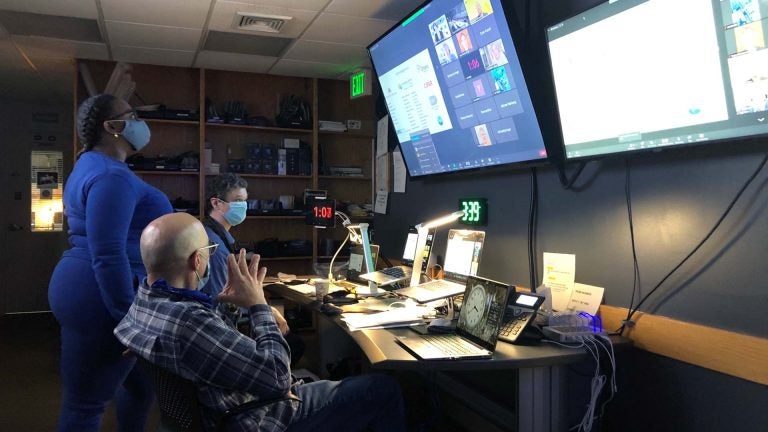
During the pandemic, our auditorium and poster pavilion were empty, as were our picnic tables, cafeterias, and bar. But while people could not come to campus, their avid attention to preprint servers and virtual attendance at online meetings revealed a large unmet need for ways to exchange scientific ideas. The virtual meetings attracted far more participants than we would have had the capacity to bring together in our current facilities. Now, post-pandemic, we are hosting hybrid meetings, but there is a clear need to add and improve on-campus housing for our visitors who are eager to return for the on-site experience. This is key to our campus expansion plan.
Exchange and outreach
By training course attendees in emerging and advanced technologies, we are broadly accelerating scientific progress across the world. Visiting course participants apply what they’ve learned while at CSHL in their own labs. I am struck that eleven former course participants went on to receive Nobel Prizes in fields they studied here.
The exchange goes both ways. When visiting scientists teach or participate in courses, new techniques are brought directly to this campus. Our in-house scientists can rapidly deploy the latest techniques in their laboratories. Moreover, some meetings visitors return later to become integral parts of our campus community. I first visited CSHL as a second-year graduate student to speak at the 1978 CSHL Symposium on DNA replication and recombination, returning nine months later to begin my independent research career.
Scientists benefit from discussing current findings and exchanging lessons from the past. After more than 130 years of helping shape the direction of biomedical research and assembling an exceptionally rich collection of archival materials, CSHL educates scientists and the public about the history of the life sciences. Our Archives include primary records, personal items, and oral-history interviews, many of which have been digitized.
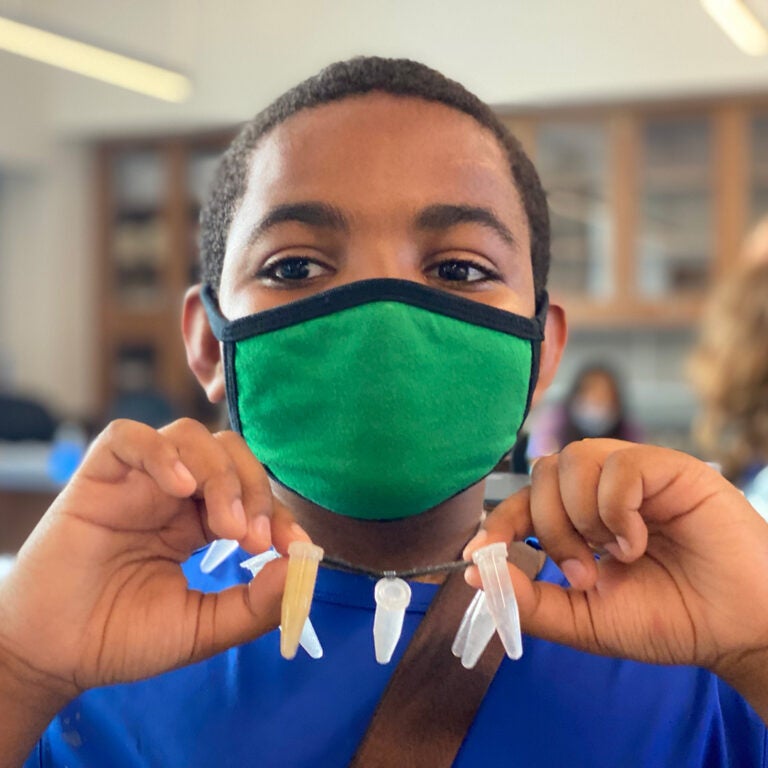
The Center for Humanities and the History of Modern Biology, started by Mila Pollock, organizes meetings on the origins of major discoveries in biology and medicine. In 2021, we hosted a virtual event featuring the research of three prominent, Nobel Prize–winning women: Elizabeth Blackburn, Jennifer Doudna, and Dorothy Crowfoot Hodgkin, presented by her biographer Georgina Ferry. These three outstanding scientists have inspired the current generation of early-career scientists.
Since 1988, through outreach programs to the public, we have invested in building a pipeline of aspiring scientists from middle school on up. Serving middle, high school, and undergraduate teachers and students, the DNA Learning Center (DNALC) is a key part of the Laboratory’s laudable cycle between research and education. The DNALC provides opportunities for our scientists to incorporate public outreach and education into their research programs. Importantly, the program educates students and their families about new advances in genetic research that may impact their health and well-being. Starting on Long Island, we have expanded our New York footprint to include Harlem and Westchester; just this year we opened DNALC NYC in Brooklyn. We hope to inspire more students to pursue a life of scientific discovery.
Hope sparks new fields
Through our convening power and programs that facilitate exchange, CSHL has also helped launch entirely new fields of inquiry. Complementing our larger scientific conferences, the Banbury Center hosts small scientific meetings with an outsized impact on society. A 1988 meeting on DNA Technology and Forensic Science led to the founding of the Innocence Project, an organization that works to exonerate incarcerated people who have been wrongly convicted of crimes. A 1994 meeting helped persuade the National Science Foundation to fund the first complete sequencing of a plant genome—an international effort that was led in part by CSHL scientists Rob Martienssen and W. Richard McCombie. More recently, a series of meetings on Lyme disease led to improved diagnostics and spurred efforts to develop an effective vaccine.
Ideas that emerge at the Banbury Center cycle back and spark new research directions at CSHL. A good example is the 2014 Banbury meeting on rhabdomyosarcoma (pdf), a rare cancer mostly afflicting children and young adults. The meeting was funded by three local foundations, including one established by CSHL’s Philip Renna (and who lost his teenage daughter to the disease in 2007).
At the time, only a few researchers around the world were studying this often fatal disease. The Banbury meeting brought clinicians and researchers together to define the most pressing questions in sarcoma biology. They mapped out a discovery process that could lead to effective therapies. Soon after, we began the sarcoma initiative at CSHL, led by cancer biologist Chris Vakoc. Initially funded by the local foundations, the initiative has attracted additional funding and Vakoc’s team has already identified promising drug targets. The Business Development and Technology Transfer team has found commercial partners to pursue potential therapeutics that are now in pre-clinical development.
The future of science starts here
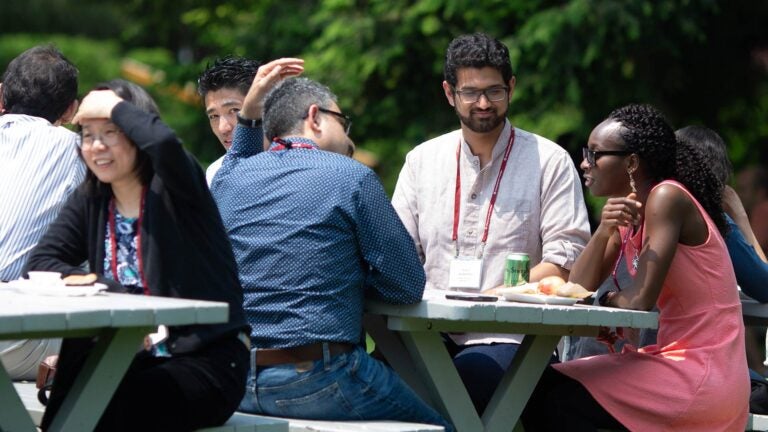
CSHL is a destination for scientists. They come at different points in their careers, as students, trainees, faculty, and leaders. CSHL is an inclusive place for all, both in-person and now online. We come together to listen to and learn from each other, find collaborators, and conduct research. We’ve created this unique environment so that scientists can advance research that will benefit society, both economically and through improved health and well-being. Cycles of research and education interact to build CSHL and the ever-advancing fields of the life and medical sciences. I am excited to work with our scientists, educators, and supporters to plan a campus expansion that builds strong foundations for the future. Most of all, I hope to see the picnic tables and the bar full of life again in 2022.
— Bruce Stillman, Ph.D.
“President’s message”
Harbor Transcript, Volume 42, Issue 1, 2022
